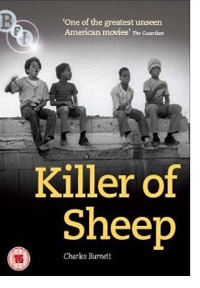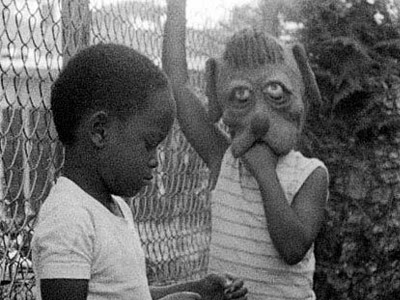Feature
You Ain't Seen Me, Right? - Killer Of Sheep (1977)
Movie Feature
Daniel
15th October 2010
Here's another instalment of our hidden gems feature, You Ain't Seen Me, Right? - the weekly blog post which is far more serious than our regular bollocks about Nic Cage movies and tits.
You Ain't Seen Me, Right? is brought to you by Daniel Palmer, of Part-Time Infidel web fame. Go on, give him a read.
 Killer Of Sheep (1977)
Killer Of Sheep (1977)With his debut feature, Charles Burnett set out to rectify the negative portrayals of African Americans that have plagued the medium since its inception. The ultimate example is D.W. Griffith's Birth Of A Nation; a seminal work that did more to create the vernacular of film than any other, but which is an abhorrent glorification of the Ku Klux Klan.
Killer Of Sheep centres on a rural family that has moved to South Central Los Angeles in search of a better life. Stan (Henry Gayle Sanders) works in a slaughterhouse; a brutal, monotonous job that allows little time for a personal life. Much to the consternation of his wife (Kaylee Moore), who is isolated in her new surroundings and craves intimacy. Stan is trapped in a dehumanizing cycle of monotony, resisting the lure of petty crime to make ends meet and daring to hope that things will improve.
The film may not be heavy on narrative, but its real strength is its focus on the minutiae of everyday life. Its stark monochrome, conversational dialogue, naturalistic performances and unobtrusive camerawork creates a bleak authenticity. Burnett takes a deliberately ambiguous stance in his compositional choices, allowing life to unfold before a largely static camera, positioning himself as a passive observer. Though it's predominantly scripted, the dialogue feels spontaneous; testament to Burnett's directorial skills, coaxing convincing performances from an inexperienced cast.

Burnett puts music to great use; not merely to establish atmosphere, but to subtly address issues. The sound of Paul Robeson intoning his love for America's freedoms and opportunities over shots of children dismantling a derelict building for lack of anything better to do has a particular poignancy. The horror of the killing floor is brought to life in an upsetting montage. Ironically upbeat music accompanies the sheep as they are led to their fate, blindly following the herd, their flayed carcasses hung from spikes, their constituent parts separated according to value.
Without ever being explicit, Burnett draws a devastating parallel between the trapped animals and the denizens of South Central; where bodies are commodities fed into the machine, where kids' lives are circumscribed by birth, where honest toil goes unrewarded. But Killer Of Sheep is not a sentimental film; it takes great pains not to pander to the clichι of the 'downtrodden poor' that has served to reduce the working class to a congenial stereotype. There are no heroes or villains, simply people doing what they have to do and trying to retain their honour in the process.
Killer Of Sheep gives the lie to the idea of an equal playing field, the dignity of work and upward mobility, concepts that are central to American folklore. Stan has bought in to this mythology, refusing to believe that he is poor, comparing his lot to those even lower on the economic totem pole. Burnett is not a correspondent delivering a dispatch from 'the ghetto', but someone who grew up in this milieu and instinctively understands its indignities and absurdities.

Support Us
Follow Us
Recent Highlights
-
Review: Jackass Forever is a healing balm for our bee-stung ballsack world
Movie Review
-
Review: Black Widow adds shades of grey to the most interesting Avenger
Movie Review
-
Review: Fast & Furious 9 is a bloodless blockbuster Scalextric
Movie Review
-
Review: Wonder Woman 1984 is here to remind you about idiot nonsense cinema
Movie Review
-
Review: Borat Subsequent Moviefilm arrives on time, but is it too little, or too much?
Movie Review
Advertisement
And The Rest
-
Review: The Creator is high-end, low-tech sci-fi with middling ambitions
Movie Review
-
Review: The Devil All The Time explores the root of good ol' American evil
Movie Review
-
Review: I'm Thinking Of Ending Things is Kaufman at his most alienating
Movie Review
-
Review: The Babysitter: Killer Queen is a sequel that's stuck in the past
Movie Review
-
Review: The Peanut Butter Falcon is more than a silly nammm peanut butter
Movie Review
-
Face The Music: The Bill & Ted's Bogus Journey soundtrack is most outstanding
Movie Feature
-
Review: Tenet once again shows that Christopher Nolan is ahead of his time
Movie Review
-
Review: Project Power hits the right beats but offers nothing new
Movie Review
-
Marvel's Cine-CHAT-ic Universe: Captain America: Civil War (2016)
Movie Feature
-
Review: Host is a techno-horror that dials up the scares
Movie Review
